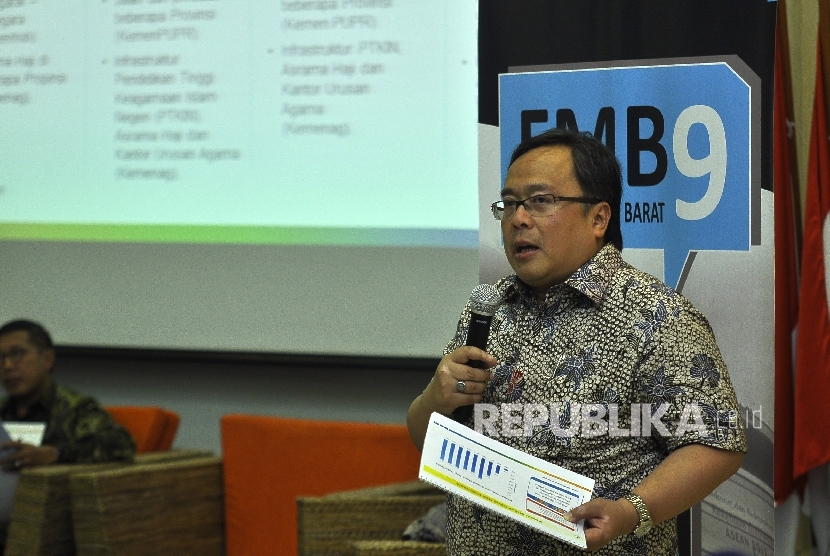REPUBLIKA.CO.ID, JAKARTA -- Head of National Development Planning Agency (Bappenas) Bambang Brodjonegoro expected that the Gini Ratio, which is used to measure the level of inequality, could be lowered to 0.37 in 2019.
"We will try to lower it to 0.38 next year based on the government's work plan. If the programs meet the targets and is well implemented to improve the welfare of poor families (PKH), then we can lower it in 2019, possibly not to 0.36 but 0.37," Brodjonegoro stated on the sidelines of the Indonesia Development Forum in Jakarta on Wednesday.
He noted that the reduction of inequality is a development focus that needs to be carried out comprehensively. Based on President Joko Widodo's (Jokowi's) direction, the government should focus on reducing inequality among income groups and between regions. This has been stated in the National Medium Term Development Plan (RPJMN) 2015-2019.
By 2019, the poverty rate is expected to fall between 7 and 8 percent from the baseline rate of 11.22 percent in 2015. Similarly, the rate of inequality may decrease from 0.408 in 2015 to 0.36 at the end of the RPJMN.
"Lowering by 0.1 is not an easy thing, but we will work to bring about a significant decline compared to when we just began the government," Brodjonegoro revealed.
According to Brodjonegoro, reducing inequality not just depends on government programs. Moreover, interventions in the form of social assistance are limited and unsustainable.
"We want the problem of inequality to be addressed continuously. If an improvement has been noted, then we would not let it fall again," he asserted.
Based on data from the Central Bureau of Statistics, in relation to the Gini Ratio change from 2016 to 2017, the share of middle-class expenditure (40 percent) increased by 0.38 percent, while the upper group (20 percent) decreased 0.48 percent and the lower group (40 percent) rose but only 0.1 percent.
The government itself will be more aggressive in reducing the inequality that is focused on 40 percent of the lowest income group who are considered not yet significantly benefitted by various programs or activities that have been made by the government so far.
"We focus on the bottom 40 percent, in addition to the intervention of the government both with direct assistance and basic infrastructure, to benefit them. Inevitably, the employment opportunities should be enhanced with the support of government's policies. We will push those who are not employed to become entrepreneurs," Brodjonegoro pointed out.


